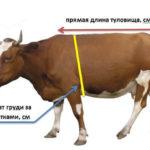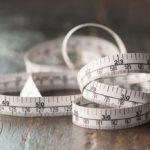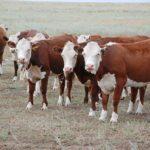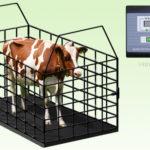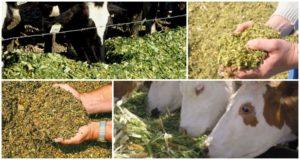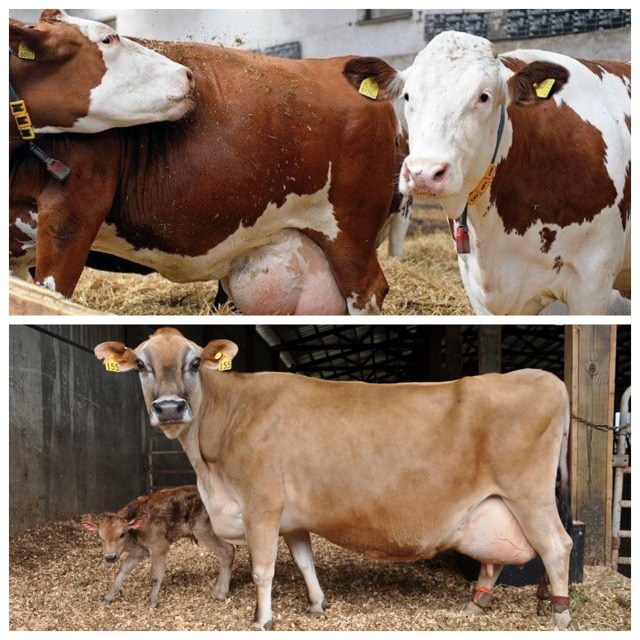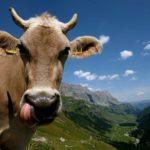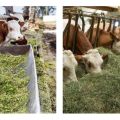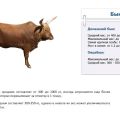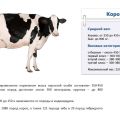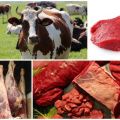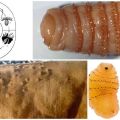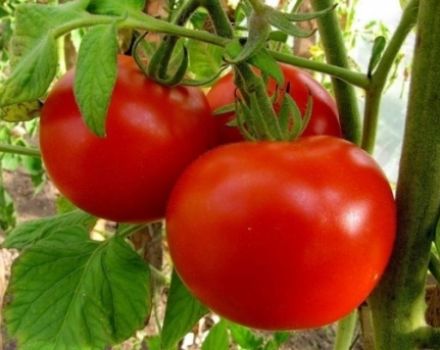Cattle live weight measurement table, top-3 methods of determination
You can find out the weight of adult cows and grown-up calves thanks to a table developed by livestock experts and independent measurement of some cattle values. To calculate the mass, it is recommended only to find out the girth of the chest immediately behind the shoulder blades and the length of the body in a straight or oblique line. The method based on measurements helps to approximately calculate the weight of cattle. More accurate values can be obtained using an electronic scale.
Average weight and weight of the animal
Every farmer and simple owner of cattle periodically measures the weight of his livestock. Body weight is monitored from the moment the calf is born and throughout all months or years of housing. Reasons why you need to know the weight of cattle:
- to find out the mass at the time of birth of a calf;
- to determine weight gain by month;
- before vaccination to calculate the dose of the vaccine;
- to find out how the animal is getting better on some particular food;
- before mating;
- before calving;
- when grown for meat before slaughter;
- for periodic verification with the standards of their breed;
- at the beginning and at the very end of the grazing season.
The performance indicators directly depend on the feeding and weight of livestock. Well-fed cows grow and recover quickly, gain at least 350 kilograms by the time they reach puberty and are ready for mating by 12 months. Gobies, which are raised for meat, with a full diet by the end of the first year of their life, weigh at least 400 kg. At 16 months, their body weight can be equal to 500 or even 700 kilograms.
Average weights for livestock:
- newborns - 35-45 kg;
- at 6 months - 180 kg;
- at 10 months - 355 kg;
- at 16 months - 455 kg;
- at 2 years old - 555 kg;
- at 3 years old - 750 kg.
Types of cattle fatness:
- exhaustion (angular shapes, protruding bones in the area of the shoulder blades, noticeable ischial tubercles);
- normal (round shape, well-developed muscle layer);
- obesity (the body is muscular, rounded, fat is evenly distributed throughout the body).
The greater the mass of a fattened bull and cow, the more expensive they can be sold. The value of an animal is estimated based on its weight. Livestock is generally weighed in the morning before feeding.
Methods for determining the mass of an animal without weights
It is better to find out exactly how many kilograms livestock gained by simply weighing. If the device has broken down or is simply not on the farm, then it will be possible to find out the approximate weight in other ways, and very affordable.
Measuring the weight of a cow using a table
It turns out that it is possible even without weighing to calculate the mass (approximate value) of cattle, and thanks to the development of Kluver-Strauch, which is most famous among zootechnicians, and the table he compiled. It is advisable to have a measuring (centimeter) tape or an ordinary construction tape on hand. Any of these meters measure the girth of the chest (OG), as well as the lateral length of the body (DT), but along an oblique line. This method is suitable for older calves and adult (after 12 months) bulls or females. For young animals (under one year old) use the table of another zootechnician - Frauven.
When measuring the circumference of the sternum of cattle (OG), the centimeter tape should be at the distance of the width of the human palm from the elbow joint. Another value - body length (DT) - is measured along an oblique line, and from the anterior protrusion of the shoulder joint (at the bottom of the neck) to the tubercle of the seat (near the tail). All measurements are taken in centimeters.
Weight according to Kluver-Strauch development (in the table):
| OG (in cm) | DT lateral (in cm) oblique | |||||||||||||||||||||||
| 125 | 130 | 135 | 140 | 145 | 150 | 155 | 160 | 165 | 170 | 175 | 180 | 185 | 190 | |||||||||||
| Weight (in kg) | ||||||||||||||||||||||||
| 125 | 164 | |||||||||||||||||||||||
| 130 | 180 | 187 | ||||||||||||||||||||||
| 135 | 196 | 203 | 213 | |||||||||||||||||||||
| 140 | 216 | 224 | 231 | 241 | ||||||||||||||||||||
| 145 | 232 | 240 | 251 | 259 | 268 | |||||||||||||||||||
| 150 | 247 | 256 | 266 | 277 | 286 | 296 | ||||||||||||||||||
| 155 | 264 | 274 | 285 | 296 | 306 | 317 | 328 | |||||||||||||||||
| 160 | 282 | 290 | 301 | 313 | 324 | 335 | 347 | 356 | ||||||||||||||||
| 165 | 310 | 323 | 334 | 347 | 358 | 370 | 381 | 394 | ||||||||||||||||
| 170 | 342 | 355 | 368 | 380 | 393 | 404 | 417 | 431 | ||||||||||||||||
| 175 | 374 | 390 | 403 | 417 | 429 | 443 | 457 | 470 | ||||||||||||||||
| 180 | 414 | 428 | 443 | 452 | 471 | 486 | 500 | 515 | ||||||||||||||||
| 185 | 449 | 464 | 477 | 494 | 509 | 524 | 540 | 552 | ||||||||||||||||
| 190 | 492 | 506 | 522 | 538 | 555 | 572 | 585 | 602 | ||||||||||||||||
| 195 | 531 | 549 | 566 | 582 | 600 | 615 | 633 | |||||||||||||||||
| 200 | 580 | 597 | 614 | 635 | 649 | 667 | ||||||||||||||||||
| 205 | 626 | 644 | 662 | 680 | 699 | |||||||||||||||||||
| 210 | 678 | 699 | 717 | 737 | ||||||||||||||||||||
| 215 | 734 | 752 | 773 | |||||||||||||||||||||
| 220 | 782 | 804 | ||||||||||||||||||||||
| 225 | 843 | |||||||||||||||||||||||
Trukhanovsky's method
This is the easiest and quickest way to calculate mass. Typically used to measure weight values in young calves and adult livestock.
For the calculation, it is important to know only two values: the circumference of the sternum and the length (in a straight line) of the body.
For measuring livestock, you can use an ordinary measuring tape. It is only necessary to measure as accurately as possible the circumference of the sternum (OG) of the animal and the length (DT) of the ridge in a straight line, from the shoulder blades to the tail itself. These two simple quantities are taken in centimeters, first multiplied, and then divided by one hundred. True, the resulting number must also be multiplied by a coefficient (percentage of body condition). For dairy cows it is equal to two, for beef cows it is two and a half.
Trukhanovsky's formula:
Weight = (OG x DT): 100 x 2 (or 2.5)
Regression Equation Calculation
The approximate weight of livestock can be determined in another simple and convenient way - using formulas developed by zootechnicians. To calculate the live weight, it is advisable to make only one measurement - find out the value of the chest circumference (TG).
Formulas for determining weight values:
- for cattle with a sternum circumference of 1.7 ... 1.8 meters: 5.3 x OG - 507;
- for livestock with a circumference of 1.81 ... 1.91 meters: 5.3 x OG - 486;
- for cattle with a circumference of more than 1.92 meters: 5.3 x exhaust gas - 465.
How do you know the meat yield?
In addition to the live weight of fattened bulls, it is important to know the slaughter yield of meat. This value, as a rule, is given ready-made, it is expressed as a percentage. Slaughter yield is the percentage of cattle slaughter weight to live weight. In other words, it is the net weight of meat without entrails, bones, and skin. When determining the meat yield, take the percentage that matches the body condition of cows or bulls. The thinner the animal, the lower the percentage. Percentages of slaughter meat yield for bulls and cows of different body condition:
- for the emaciated - 45 percent;
- for normal people - 55 percent;
- for fat people - 65 percent.
To determine the meat yield, you need to take the live weight of cattle and multiply by a percentage and divide by 100. It is important to remember that the less a cow or a bull weighs, the less meat will be obtained at slaughter. Young calves have very little muscle and adipose tissue. Most of their weight comes from bones and skin.

